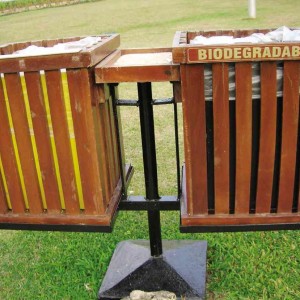Cheap sachets clogging the country’s drains

“SOME LGUs do not implement the ‘no segregation, no collection’ ordinance. Compliance ranges from 53 percent to 100 percent,” says Director Aguinaldo of the National Solid Waste Management Commission.
CLARK, PAMPANGA –What appears to be a simple economical solution for many ordinary citizens is actually one of the major items clogging the country’s drains—the sachets.
In her welcome speech during the first Asian Development Bank (ADB)-funded solid waste management conference held last May 23-24, 2013, Regional Director Lormelyn Claudio of the government’s Environmental Management Bureau said, “We are challenging LGUs to partner with us for a mechanism to have refilling stations for detergents and shampoos so that we can do away with sachets. If we have time and resources, we can come up with a pilot project.”
One simple approach that has already been adapted in many countries includes recycling plastic juice packs into reusable products such as fashionable bags. However, some people find that the effort is not enough to alleviate the gravity of the problem.
The conference did not lessen the importance of the Ecological Solid Waste Management Act and associated practices such as sorting, recycling, reusing and reducing and in fact called for its strengthening. But after several years of this law, and with its irregular implementation, conference participants pointed out the need to explore more viable options to complement it.
In her closing remarks, Director Lormelyn Claudio urged her audience to go beyond the “bags from trash” mentality and to look for more long-term sustainable projects. “Director Domingo has said we should invite investors to come in. We should go beyond bags from trash. Bottom line is that waste management should earn.”
Article continues after this advertisementFurthermore, Emelita Aguinaldo, Executive Director of the National Solid Waste Management Commission cited that urban cities produce more waste than rural areas: “A breakdown of waste in Metro Manila has the following percentages: metals—5 percent; glass—3 percent; food and organics—50 percent; special hazardous—1 percent; plastics—25 percent; paper—12 percent;and residuals—4 percent. Urban cities are already responsible for almost 0.6 kilo of waste per person per day. In rural areas, the average is 0.3 kilo per person per day.”
Article continues after this advertisementThe projection during the conference is, if nothing is done and current trends continue, the Philippines will need 200 Payatas sized landfills by 2020.
It was mentioned that there is no more reasonably priced land available for trash disposal. Certain data were provided by Hannu Edward Pelkonen, Team Leader of the Project Preparatory Technical Assistance, that includes the following: 1) Metro Manila and Calabarzon landfills are already full with no extra place identified, 2) 44 percent of Philippine waste comes from Metro Manila, where there are not enough sanitary landfills (SLFs) with reasonable lifespans; 3) Quezon City’s Payatas SLF has less than two years to go.
He continues, “According to the Department of Energy, the Philippines is already facing an electricity shortage. Brownouts will be more common in the future. Calabarzon is the economic engine of the Philippines, generating 70 percent of the Philippines’ GDP. We need energy day by day—it doesn’t come free. And we are generating more and more waste. This waste can be the source of energy. Recyclables like metals and glass can be taken out. Plastics and residuals can be turned into syngas to be turned into energy, while biodegradable waste can be turned into biogas/methane for energy.”
ADB’s Lead Urban Development Specialist Rudolf Frauendorfer explained their project thrust: “What is our sector approach, or how do we finance a project? We have $70-$100 million for solid waste. The pilots are just a start; they will not consume the entire amount. The bulk of the money will be disbursed to other LGUs over a six-year period.…We will finance technical solutions as long as they are proven, sustainable and affordable. We do not prefer one solution over another. Waste to energy is an interesting solution to treat the residual waste, but it is just one of many solutions. It may not fit all LGUs. There are implications on cost and capacity to operate these plants. Each LGU will need to decide what is right for them.”
Lawrence Bautista and Hazel Tamayo of Holcim Philippines (cement business) provided an example on how their company attained sustainable waste management solutions. “We make use of the cement kiln for co-processing. Geocycle is the waste management brand of Holcim. Co-processing is done in over 70 countries worldwide. Highly industrialized countries can maintain their forests, their air, clean rivers and lakes because they’ve implemented strictly their environment laws. They have developed effective solutions to waste. One way is the kiln for co-processing.”
The process was further explained, “Cement kiln co-processing is the simultaneous thermal destruction of qualified waste materials while recovering energy and mineral content and producing cement in one operation. This is the process diagram for making cement. We introduce the pre-processed waste in the kiln as well. It allows us to recover energy. It uses a high temperature process, which prevents dioxins and furans. There is no solid waste residue after the process.”